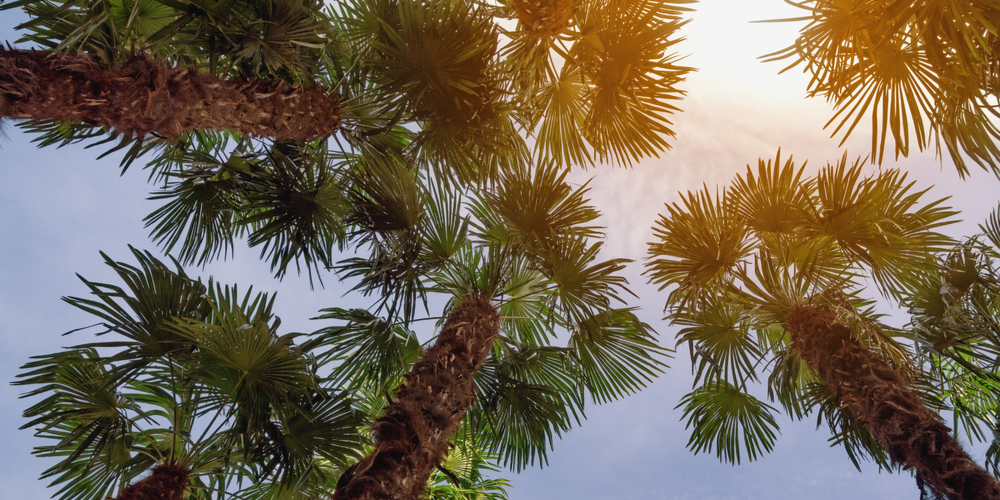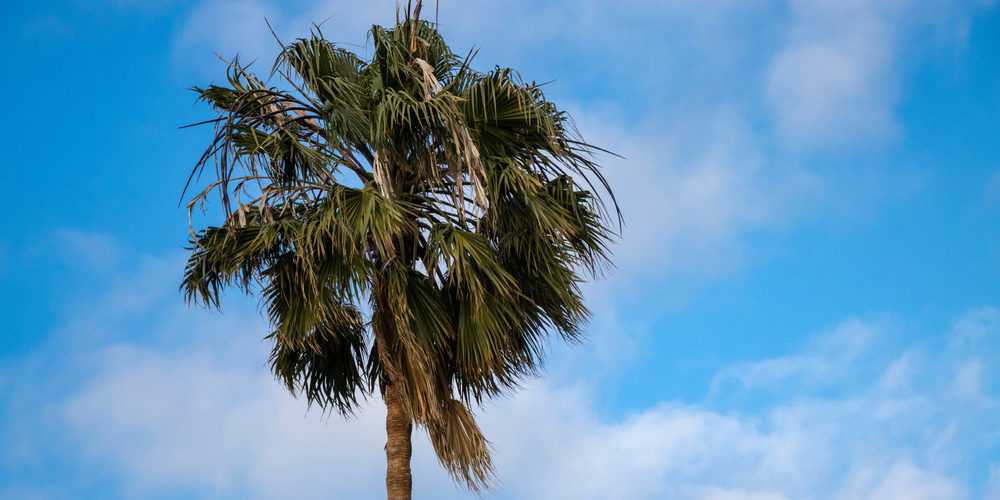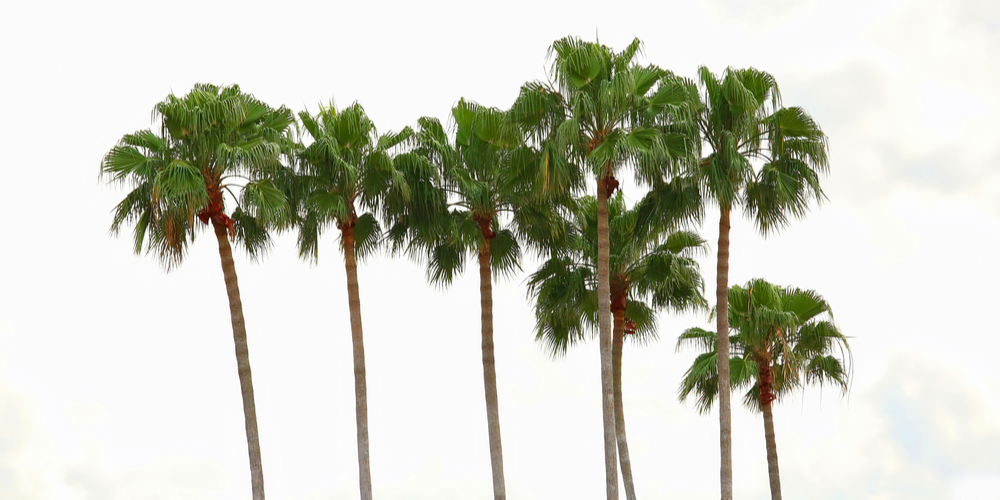Yes, there are palm trees in San Francisco, and they are of different varieties. Many palm trees in San Francisco are imported from tropical areas and other countries, some arriving in the area as early as the 1800s. However, the current proliferation of palm trees in San Francisco results from a conscious effort by the city to plant them to boost tourism and mitigate urbane blight.
It is a campaign that started after the 1989 Loma Prieta earthquake. It explains why there are so many palm trees along streets like Dolores Street, Octavia Boulevard, Sixth Street, and many others. By 2000 there were 230 trees, and many have added to that number, without counting those in private gardens.
Palm Trees Are Everywhere in San Fransisco

The use of palm in the city architecture and landscaping comes from the unique attributes of palm trees. They do not offer logistical challenges and have a survivability edge over most other trees. Palm trees do not block street signs or storefronts, and they still allow for the excellent views adding to them instead of obstructing them.
Mature plants which already have beauty are also transplanted easily. Palm trees also do well even in salty soils and can withstand the heavy winds common in the area. They also have small roots which cannot lift or crack nearby sidewalks. Finally, they grow straight, meaning they pose no threat to powerlines.
Types of Palm Trees You’d Find in San Fransisco
There are different palm trees available, and San Francisco is excellent for their flourish. Often, their names denote their origin as San Francisco, and the larger California has only one native species of palm trees. Some of the common kinds in private gardens and public homes include;
Canary Island Date Palm – Phoenix canariensis
This slow-growing palm tree is a native of the Canary Islands just off the coast of Morocco. It can grow up to 80 feet tall with a mature canopy spread that stretches about 35 feet. They have huge trunks about five feet in diameter when fully grown. They are some of the most common street trees though they can also be found in pool areas. Their biggest threat is the fusarium wilt, a disease spread by pruning tools.
California Fan Palm- Washingtonia filifera
As the name suggests, this is the only palm tree species native to California and thus San Francisco. They are likely to be found near streams or springs in the rocky desert canyons in the wild. It grows up to 60 ft in height, while it can get up to 82 ft in ideal conditions. Its fronds can stretch up to 13ft long and resemble fingers. At its widest, a mature trunk measures 10-20 ft broad. It is one of the hardiest species, and even the Department of Agriculture ranks it in the hardiness zone 8. The tree is also popular as an ornamental plant in most private spaces.
Mexican fan palm – Washingtonia robusta
The Mexican fan palm home is in the Mexican coastal regions of Baja and Sonora. It is one of the largest palm trees as it grows up to 100 feet tall, and its canopy stretches 12 feet when the plant matures. It is hard to miss it as it likely doubles the buildings and powerlines in height. They add a graceful motif to the skyline, which explains why they are preferred in the streets. The Mexican fan palm can also live for 150 years, and it is propagated only by seed.
Chinese Windmill Palm- Trachycarpus fortune
The Chinese Windmill Palm is native to parts of China and Japan. It is a highly adaptable palm tree, though also one of the shortest. It can grow up to 40 feet, but most fall in the 10 to 20 ft range. They can grow in a wide range of environments and grow slowly, about 8 inches a year. They are excellent as a pot plant and will have a greater aesthetic pull when grown in a group with enough shade and moisture.
Guadalupe Palm – Brahea edulis
The Guadalupe Palm tree comes from the Guadalupe Island near the Pacific Ocean coast of California. Such proximity makes it thrive almost like a native species in many areas of California, including San Francisco. It can thrive in windy areas, in the shade or the sun, inland and coastal areas, and even with minimal water. For garden landscapers, it is ideal as it can stay in the container almost indefinitely. A fully matured plant gets up to 30 ft, usually in 60 years. Its canopy works well, whether as a solitary plant or in groups.
Are There Palm Trees in San Francisco?: Conclusion
These are some of the palm trees in San Francisco. Many were brought here by gardeners and visitors to other lands and others by missionaries for their fronds. They not only provide greenery but help create a holiday-like atmosphere.

